Plant This: Chinese fringeflower
As winter and spring duke it out in late February, Chinese fringeflower (Loropetalum chinense) starts strutting its stuff, flashing hot-pink, strappy-petaled flowers amid its dusky-purple, evergreen leaves. Dark foliage is kind of rare in central Texas — our native and adapted plants tend to have gray-green and silver-blue leaves, an adaptation for surviving heat and drought — so the wine-colored leaves of this Asian shrub are a welcome addition to our gardens.
Pictured here, in the lower garden along my back fence, is Loropetalum ‘Sizzling Pink’, which has grown quickly to about 5 feet tall, with an open branching habit and fairly vertical form. Without the fuchsia blossoms, it blends in a bit too well with the rough cedar posts that line our old chain-link fence, but I like the way it pops against the culvert-pipe planter. A light background would be better for showing off its dark leaves.
Loropetalum is versatile. I’ve seen it espaliered along a wire fence in the Lofgren-Bayer Garden in Houston.
And it makes a beautiful clipped hedge, as seen in the Jones Garden here in Austin.
Taller varieties can be left shrubby or clipped up tree-form, like a small crepe myrtle. A fairly new cultivar called ‘Purple Pixie’ is perfectly sized for containers (as seen in Cyndi Kohfield’s garden) or as a groundcover, but I confess I’ve killed three of the ‘Purple Pixie’ and have given up on it.
Three larger cultivars are doing quite well for me, however. Aside from ‘Sizzling Pink’ (shown at top), I’m growing ‘Plum’ and ‘Rubrum’. All prefer morning sun/afternoon shade or dappled shade in our hot, humid climate. The leaves tend to lose the rich purple coloring in too much shade, but full sun can bleach out the leaves and stress the plants. Given a little shade they are reasonably drought tolerant once established (excluding ‘Purple Pixie’, in my experience), and deer ignore them in my garden.
Chinese fringeflower is quite handsome, especially in bloom. But I often see large varieties planted as foundation shrubs, which quickly outgrow their intended size, so choose with care and look for dwarf cultivars unless you plan to hedge them.
Note: My Plant This posts are written primarily for gardeners in central Texas. The plants I recommend are ones I’ve grown myself and have direct experience with. I wish I could provide more information about how these plants might perform in other parts of the country, but gardening knowledge is local. Consider checking your local online gardening forums to see if a particular plant might work in your region.
All material © 2006-2015 by Pam Penick for Digging. Unauthorized reproduction prohibited.


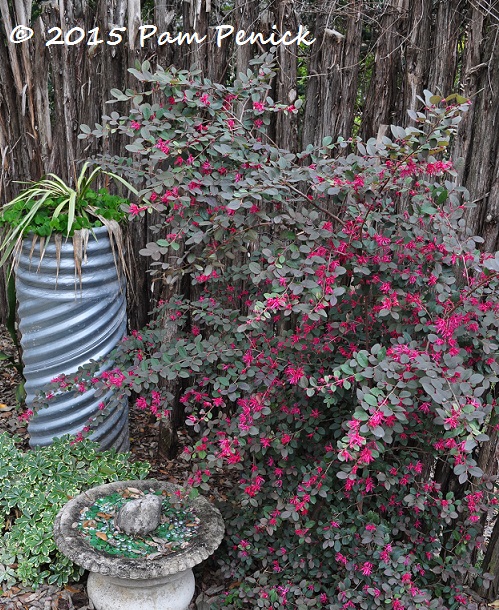
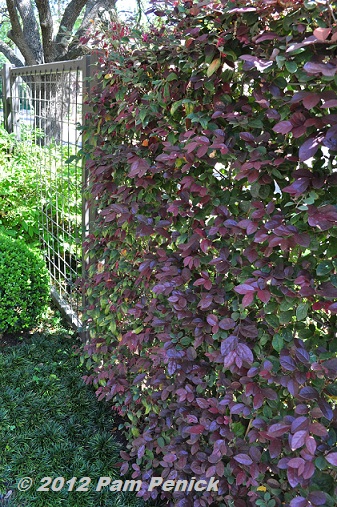
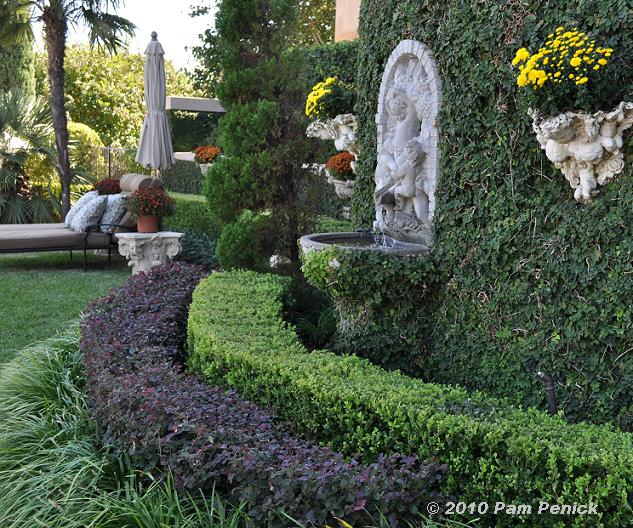
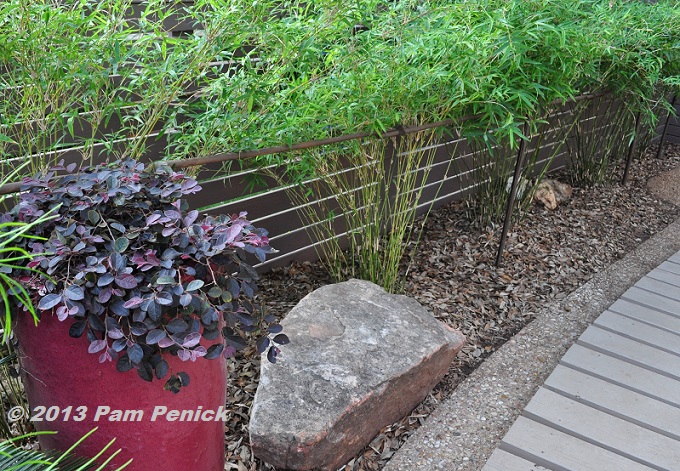
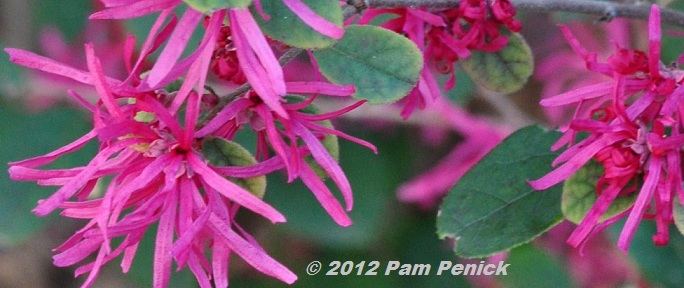
I really like these.
We have one in the fenced yard. I would love one out front, to break up some of the green, green, green. But, with our deer, not sure it would work.
Your deer are a challenge, for sure, but the deer leave it alone in my garden, for what it’s worth. —Pam
Well, what do you know! Used as a hedge? How ingenious. Love it! Of course it’s everywhere here in the Pacific NW where a good freezing winter will make it drop its leaves, but no worries – they will eventually recover. An invaluable shrub for its rich leaf color, glad you can grow it too.
It’s kind of surprising when a plant will thrive in both our climates, isn’t it? —Pam
One of my favorite plants!
Speaking of ‘Purple Pixie,’ I recently had a conversation with Brad at Leaf Landscape Supply about why I and everyone I know kills it. He said that most loropetalums prefer acid soil but will do all right in alkaline, but this particular variety needs a very acid soil to do well. It also can’t stand wet feet, but needs consistent moisture. He’s had it do well on the east side in raised beds that were heavily amended, and also says it can make a good container plant because then you can really tweak the soil mix to its preferences.
That explains a lot! I had read that loropetalum prefers acidic soil but will tolerate our alkaline soil in Austin. But it’s interesting to know that Purple Pixie is more acid-loving than the others. The consistent moisture is a no-go in my garden (ain’t nobody got time for that!), and lack of water is what I suspected had killed the three I tried. —Pam
I tried one of these here in SW IN zone 6 they say. It couldn’t hack the cold. I think they are a beautiful plant. Of course this year as was last year a zone 5 winter. You never know around here.
I think loropetalum is rated at hardiness zone 7 and up. Sorry, Lisa. —Pam
Oh Pam , you kill me. I lie in zone 6b and every time you showcase a plant, I have to have it, only to find that it won’t grow here. I’m having some serious zone envy right now!
I’m sorry, Jeanne! If it’s any consolation, there are many, many zone 6 (cooler climate) plants I’d love to be able to grow. —Pam
3 dead! Wow, and that’s an expensive (at least here) plant. Hopefully you were trialing them and didn’t spend the cash.
Your first shot is gorgeous, all those blooms!
I do think all three ‘Purple Pixie’ plants were freebies, two as giveaways from the Asheville Fling and one from somewhere else. —Pam
They work very well here, which means they are suitable for Southwest Georgia, North Florida, South Alabama and the rest of the Gulf Coast.
Most of mine are several years old and have grown into grand trees. Usually they are in full bloom by now but unseasonal cold has set them back a little. They are hard to discourage; a few days of warm and they’ll be spectacular again.
The famous Georgia Horticulture Professor disparaged White Loropetalum when they first were available. Now they are gaining popularity. I think white are the prettiest of the lot.
I’m glad you mentioned the white loropetalum, Jean, because it’s another good option, albeit one I don’t often see available in nurseries in Austin. —Pam
I wish you could see what the mow-blow guys do to this plant in commercial landscapes out here. No bueno !
Oh no, do they clip them into meatballs? —Pam
I’ve got two. I planted ‘Pizzazz’ when it first came out, but it failed to read the tag where it is only supposed to get 6′ tall. My other is ‘Zhuzhou Fuchsia’, which I planted for its height, and I limb it up sort of like a crapemyrtle. I know both of them are going to look a little rough after this past winter, but they usually recovery quickly. I agree with you about ‘Purple Pixie’. I have only known it to be a very weak plant.
Isn’t it frustrating when plants don’t read their tags about size (or deer resistance)? And it’s too bad about ‘Purple Pixie’, as it’s such a nice size for containers. —Pam
I love loropetalum! And they do make nice small trees. They do great in every form here in Houston. I had not thought about espalier them…thank you for that idea!
And that espalier is in a Houston garden, Laurin. Maybe you’ll see it on tour one day. —Pam
It’s a lovely plant but it didn’t perform well for me (I killed 3, none of which were ‘Purple Pixie’), perhaps for one or more of the reasons mentioned by your commentators.
Bummer, Kris. It’s hard to keep trying after losing three, isn’t it? Do you see them in other Los Angeles gardens? —Pam
Absolutely love the colors, but hate that it’s one of those plants that resolutely refuses to thrive in my garden. I, too, am a Pixie killer.
Have you tried any other cultivars, Vicki? I found Pixie too picky, but the others have been much more carefree for me. —Pam
These aren’t hardy here and last winter I lost two very pricey loropetalum shrubs I had special ordered. Ouch…. But they grew like mad in my garden in SC. Lesson learned!
Is northern VA zone 6, Casa M? You must be right on the cusp of where it’s hardy. Bummer that yours didn’t make it, especially since they were pricey. —Pam
I rather wish you had written this article a month ago.I justed planted Pixie and now hearing about how picky it is. I was looking for a low grower. However, I think I have a place for the others you mention.
I will be interested to hear how it does for you, Jenny. Your thumb is remarkably green. —Pam
This tree is growing—thriving—in the sheltered courtyard of my garden home in San Antonio. The tops of the branches are 3-4 ft. higher than my roof line. We bought the house in Oct. 2014 and have never watered it, and it has been blooming since November.
The blooms are about to drive my husband crazy since they fall into our swimming pool and must be skimmed out everyday. Husband wants to take a chain saw to the trees—there are four main trunks and some smaller ones. I want to dig them out and transplant them, but he just rolls his eyes at me—says that’s too much work, they’ll just die, et cetera.
They are in a narrow bed next to the neighbor’s house and won’t be easy to dig out. I thought we should prune them by half before we try to take them out. Do you have any suggestions?
I think it would be really hard to transplant such large, established plants, Deborah, even if you didn’t have the additional constraint of a narrow bed. I sympathize with your husband, but loropetalum doesn’t typically bloom for more than a few weeks, right? You’ll have to decide if the hassle of skimming the flowers for a short time is worth the beauty of the plant for the rest of the year. There’s no right answer. It’s what’s right for you. —Pam
Thank you Pam, for your thoughtful response. Looks like I will need to use all my charm and diplomacy to persuade Husband to let them be (except for pruning them on the side of the neighbor’s eves—we do need to be a good neighbor).
You have a lovely website, and I look forward to reading your book. Best wishes, Deborah
I have always been attracted to this plant, but have avoided it because of my alkaline sand. You have given me hope that it might be worth a try, as I am a sucker for eyecatching purple and chartreuse foliage. Thanks for trying different plants and sharing your experiences. Hope you win the blogger award, I think you have one of the best blogs out there period, and as a bonus for me it’s mostly plants I can grow.
I don’t know about sand, but in general loropetalum is tolerant of alkaline soil, though I think it does best in acidic. Tolerant is good enough for me! Good luck with it, and thank you so much for your kind words too! —Pam